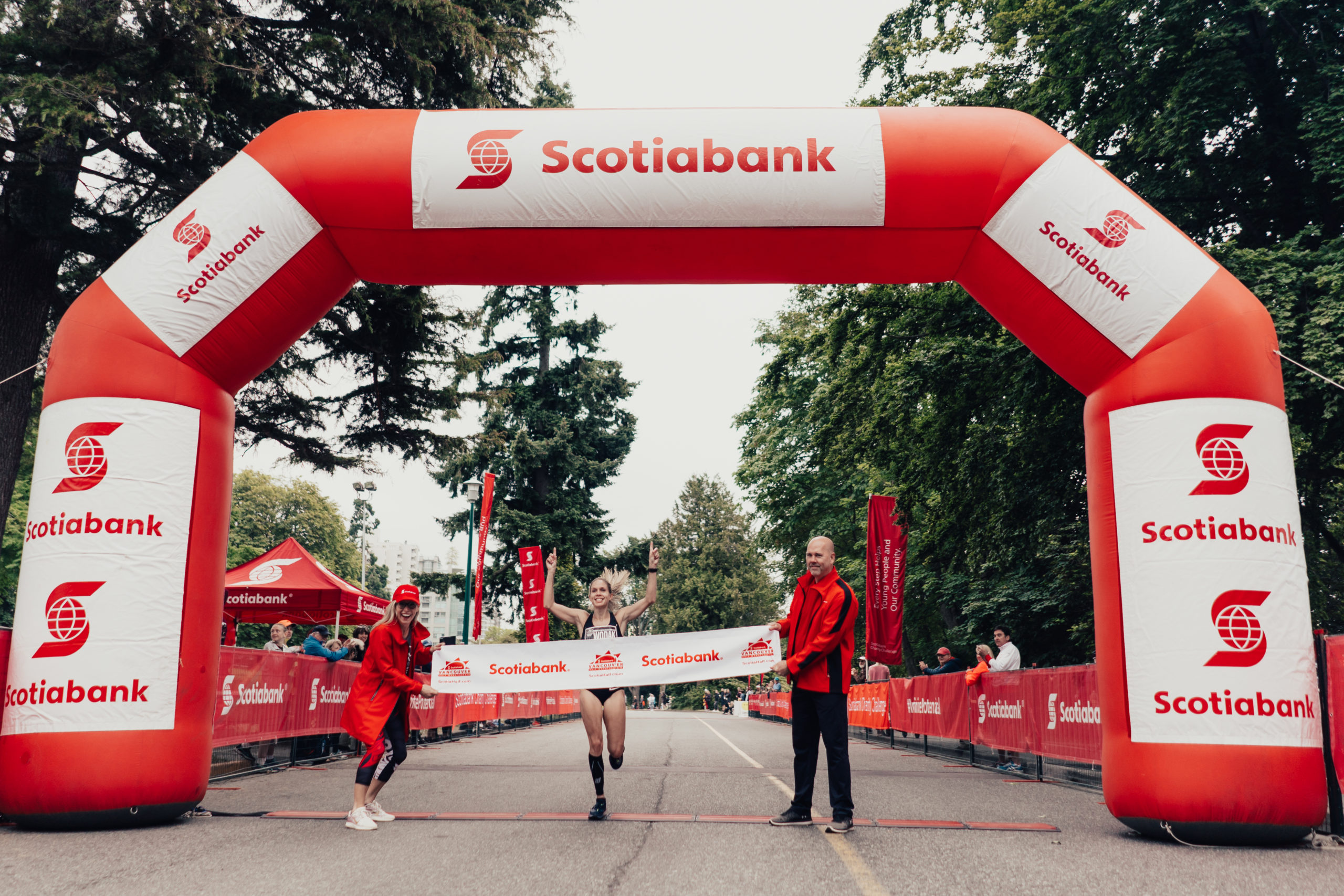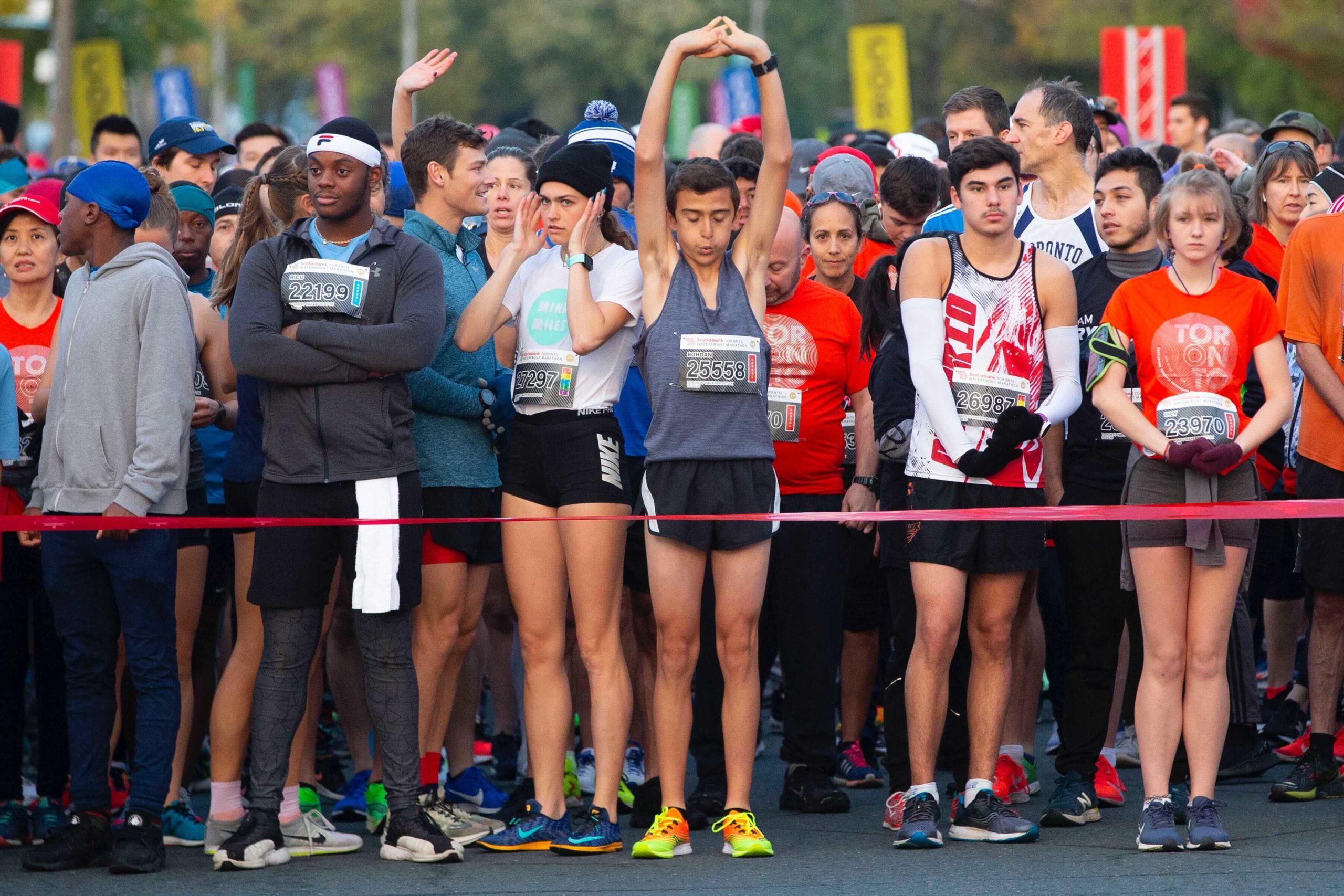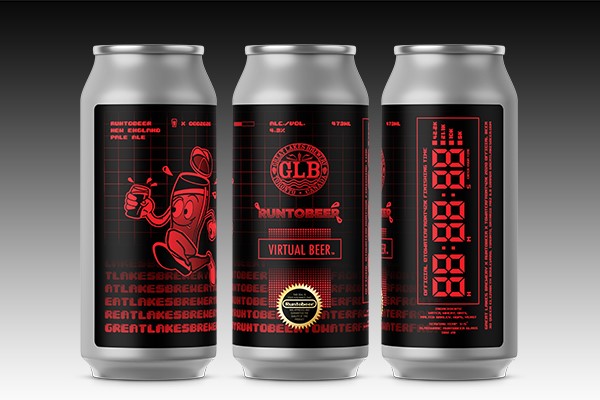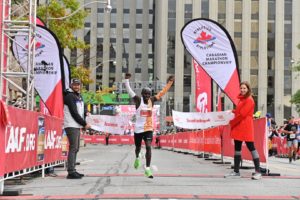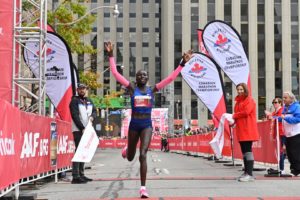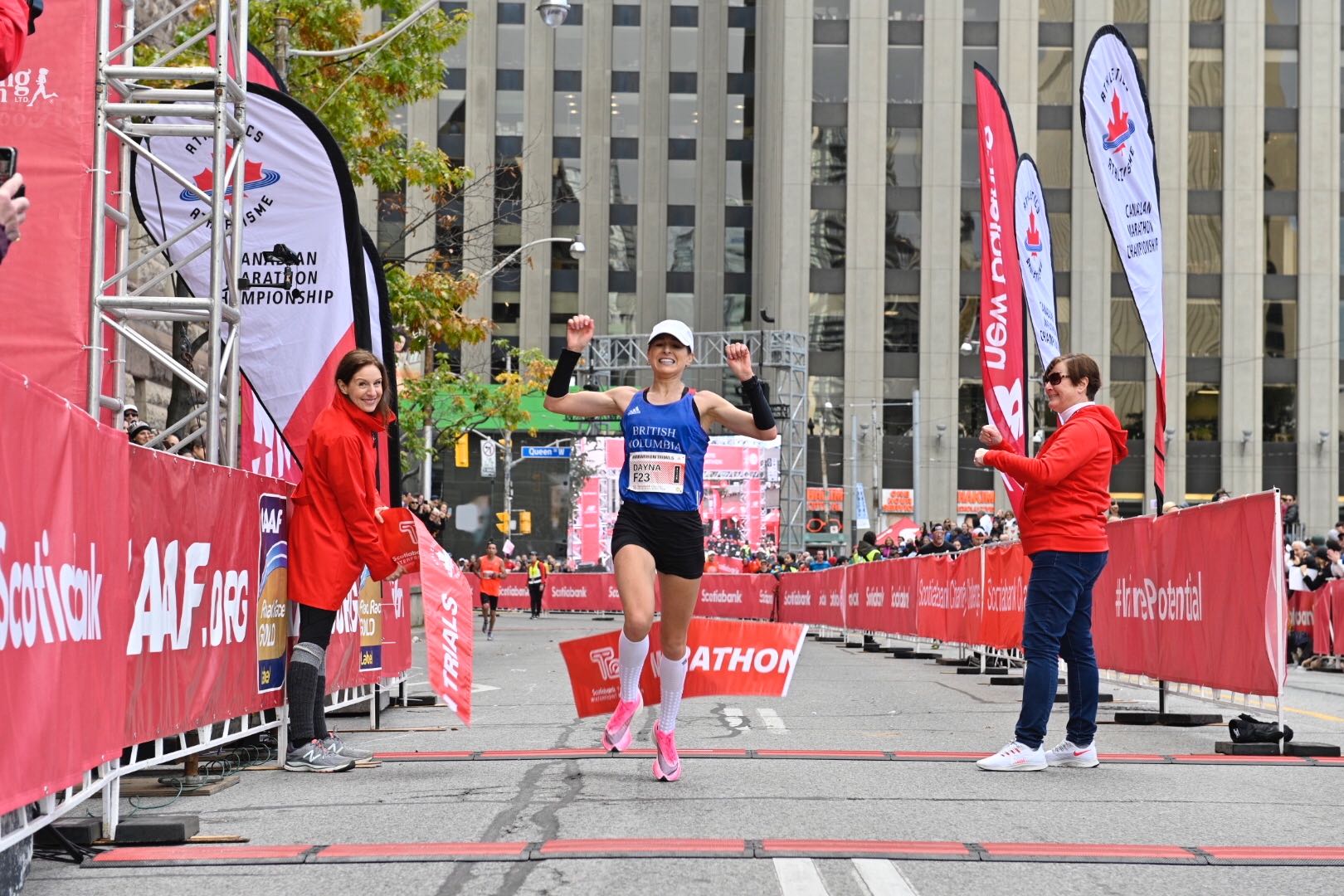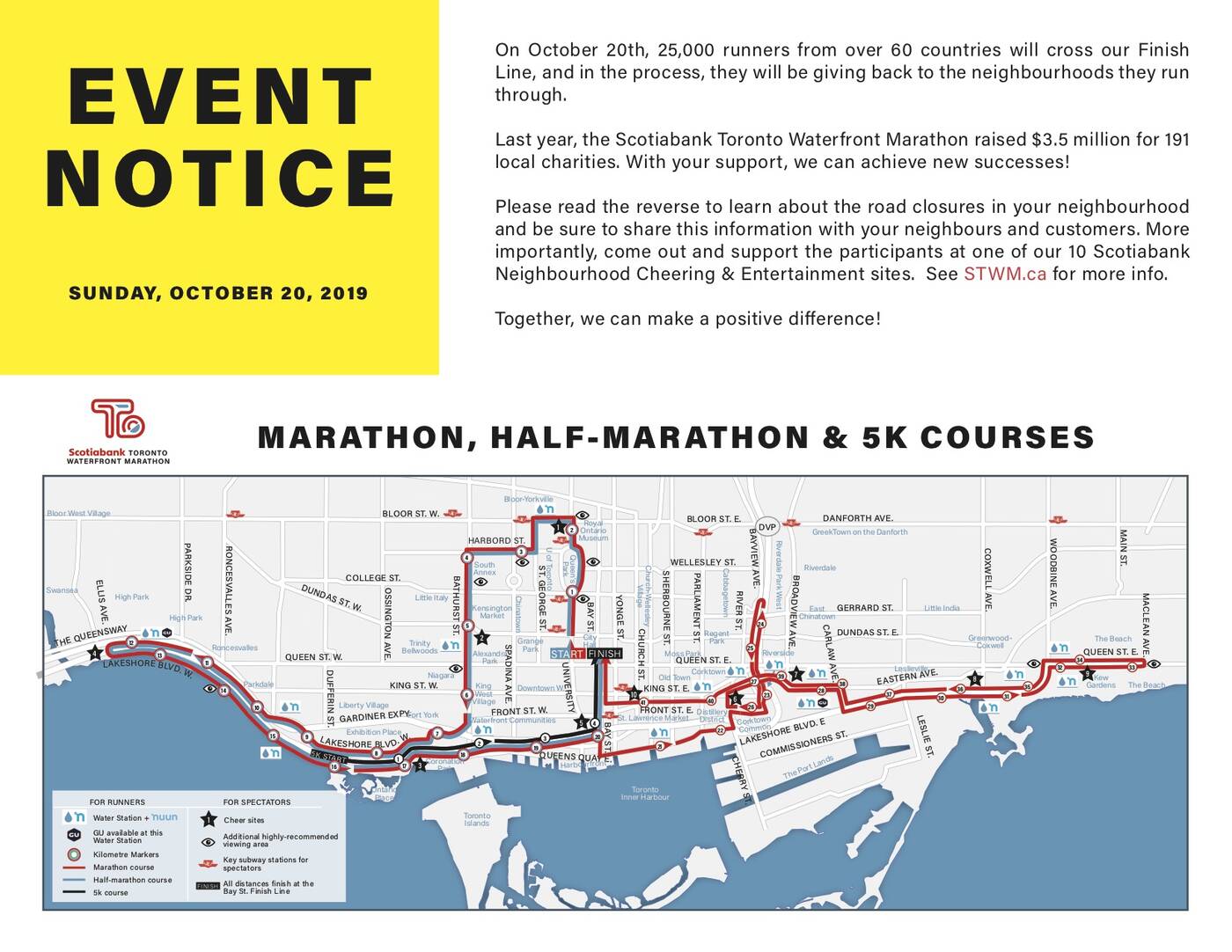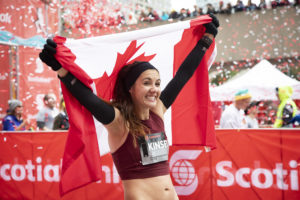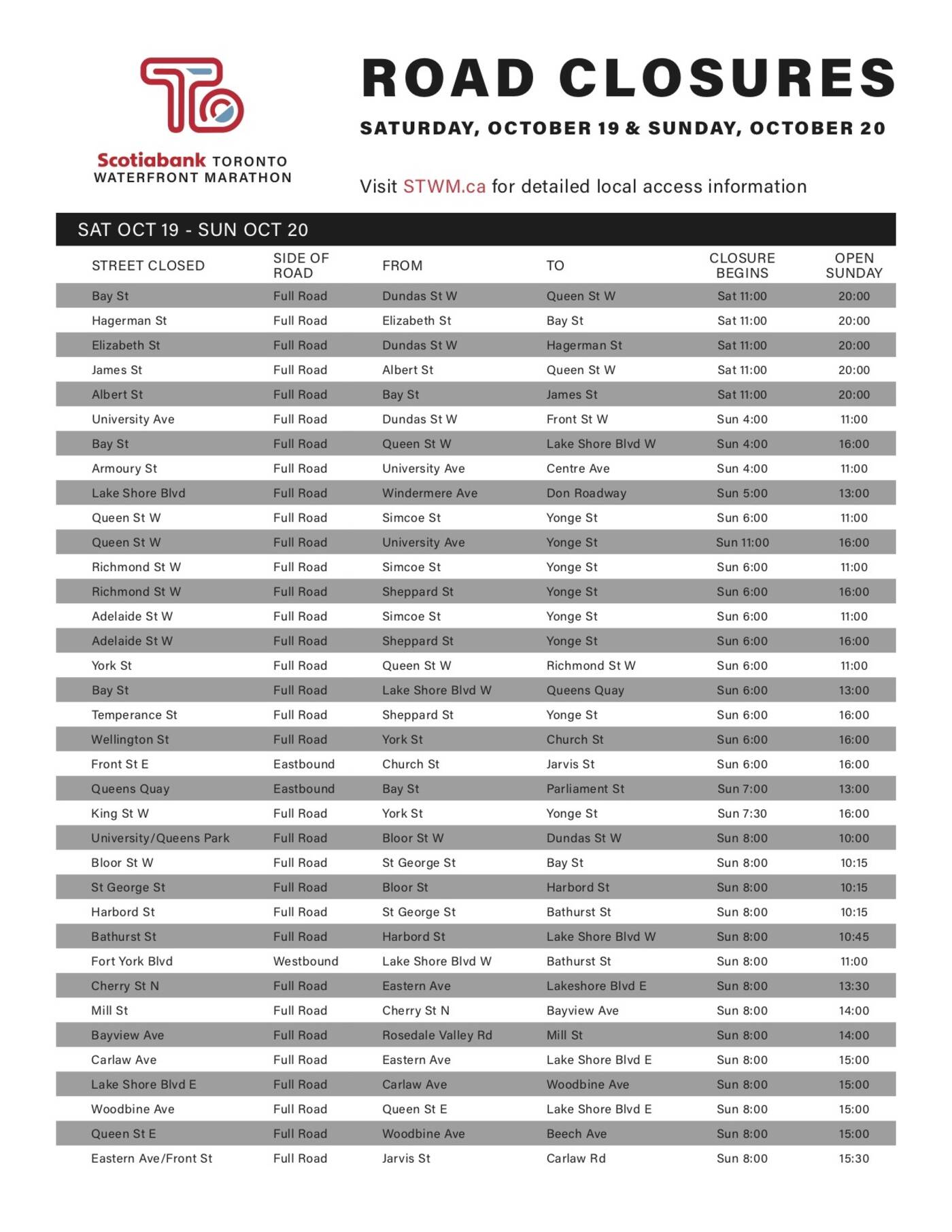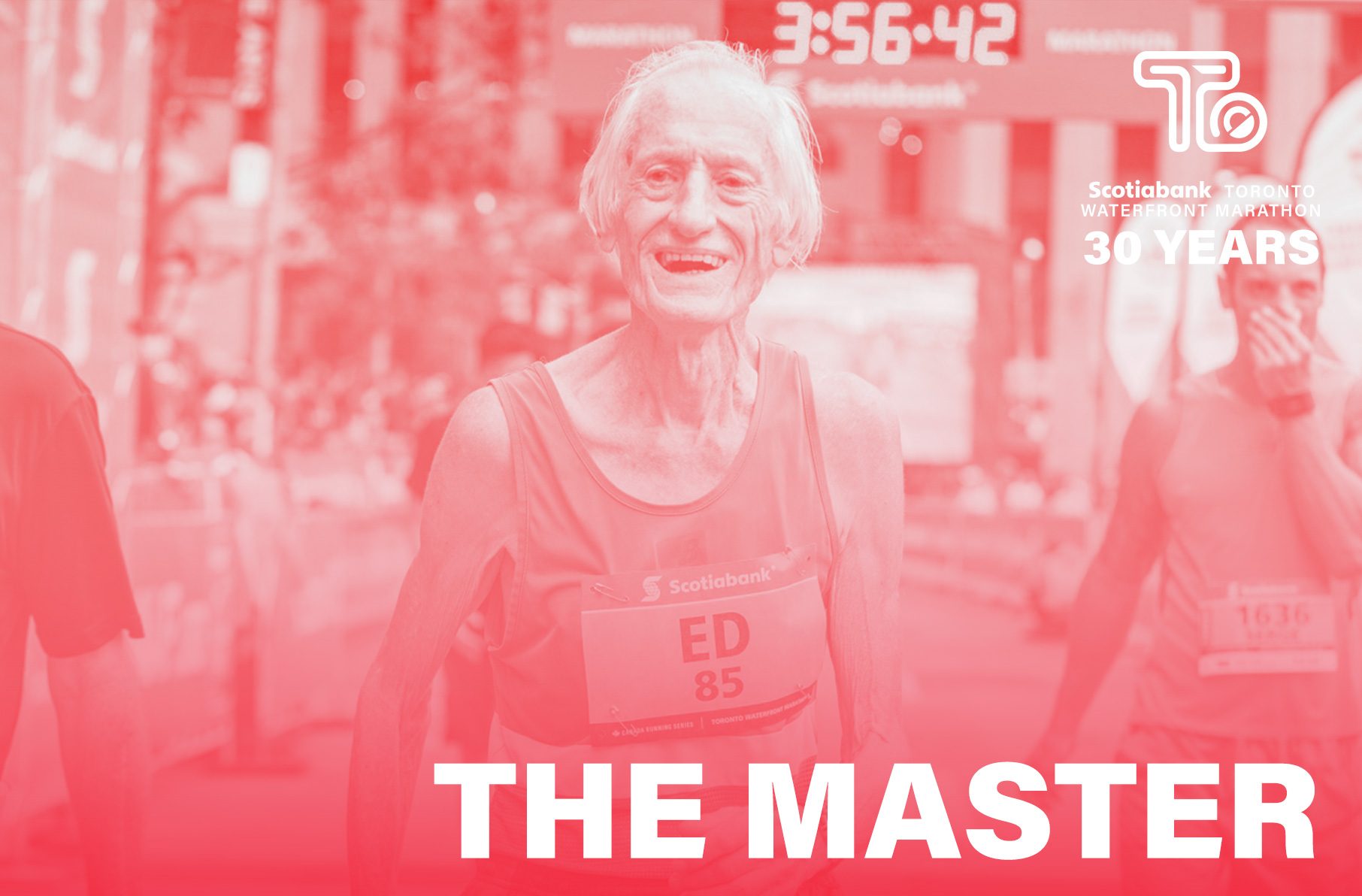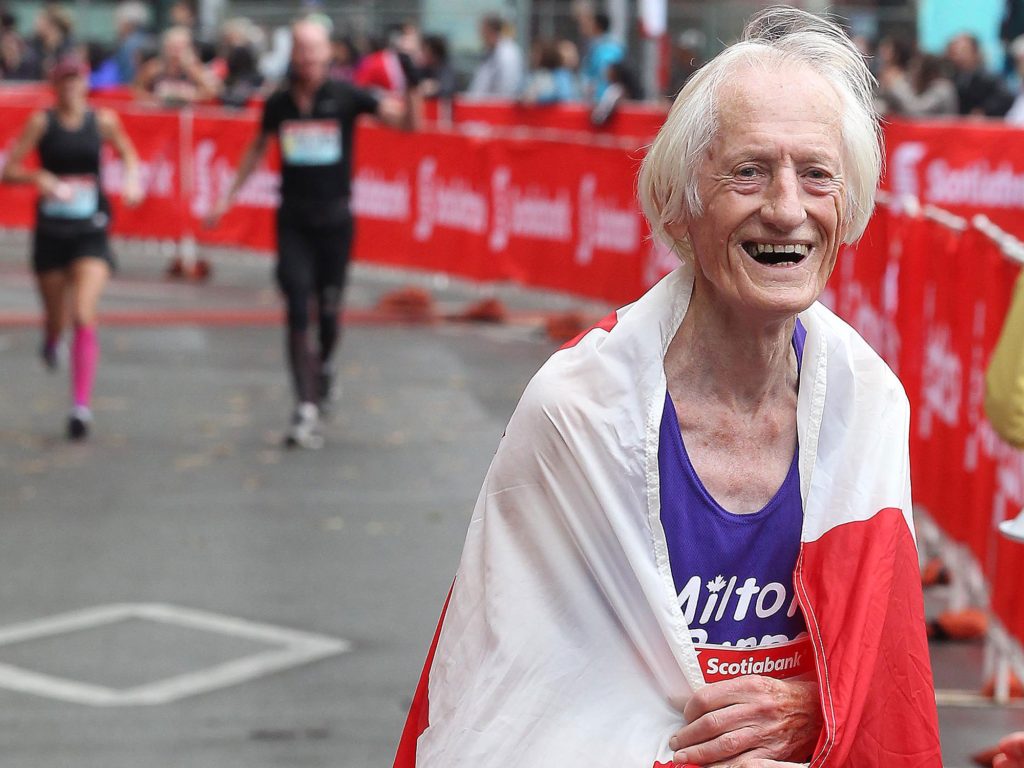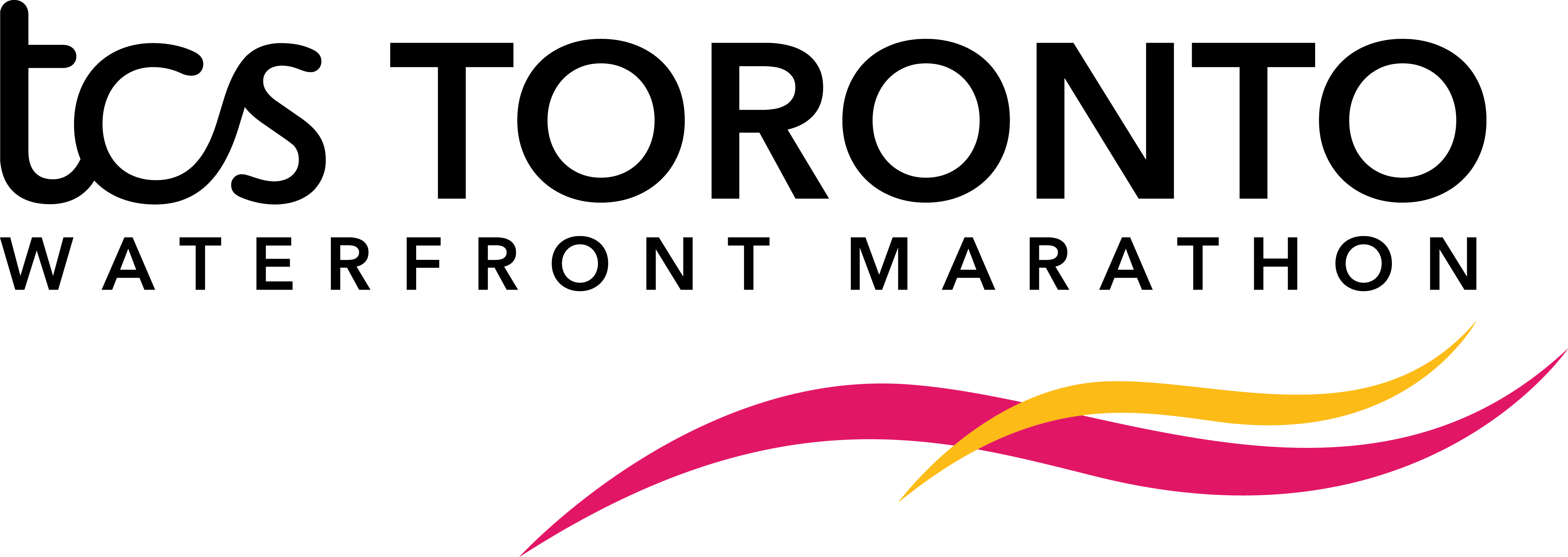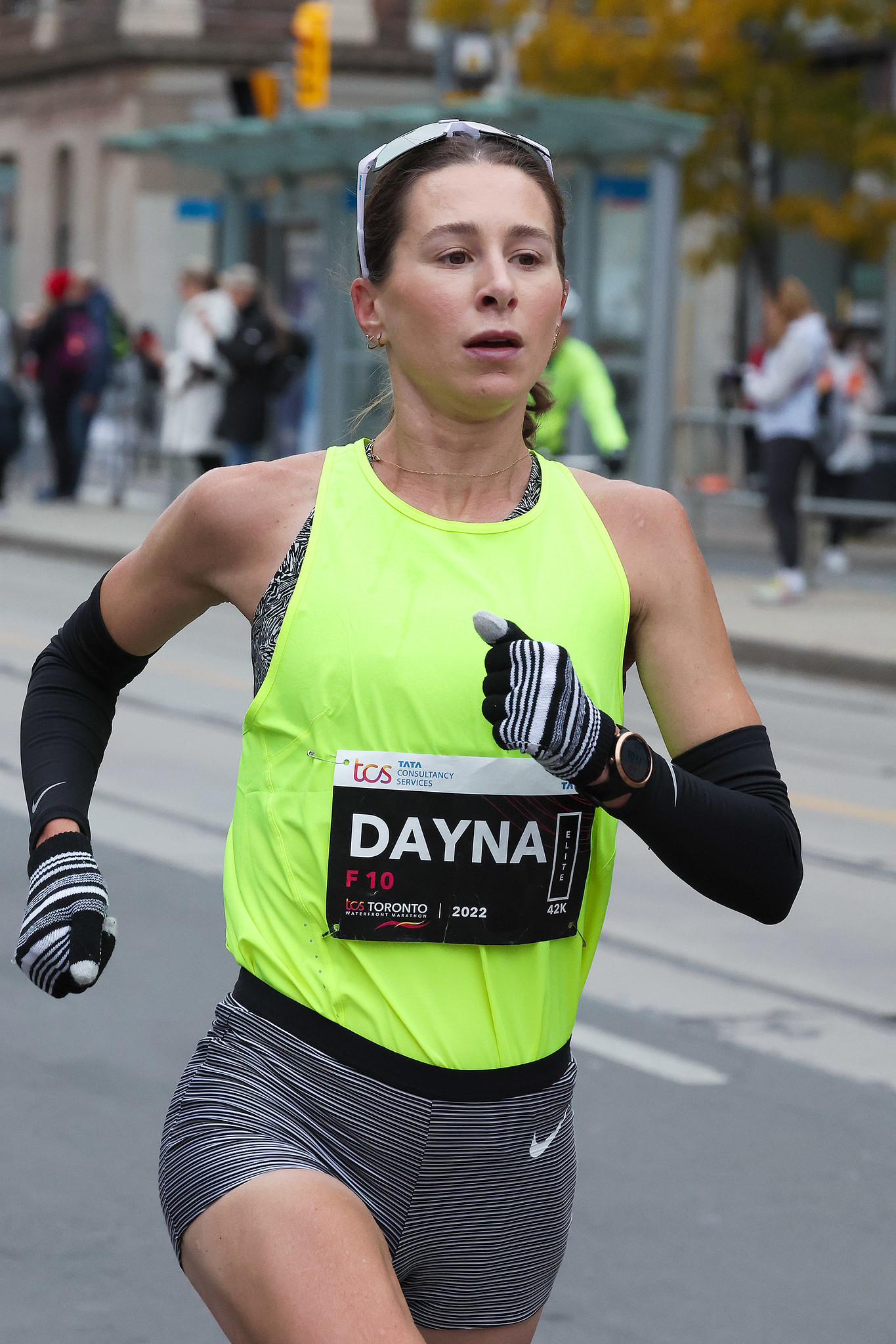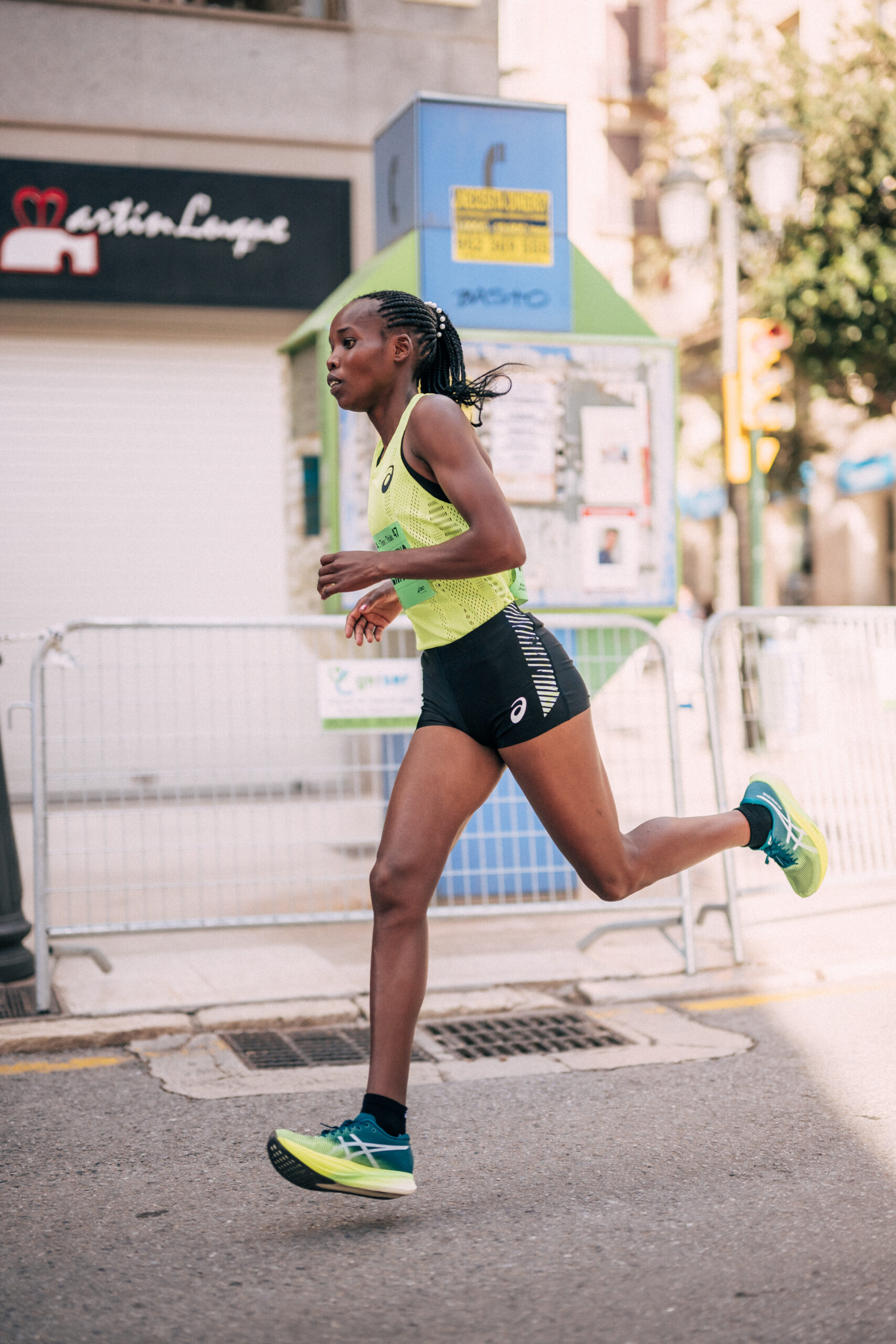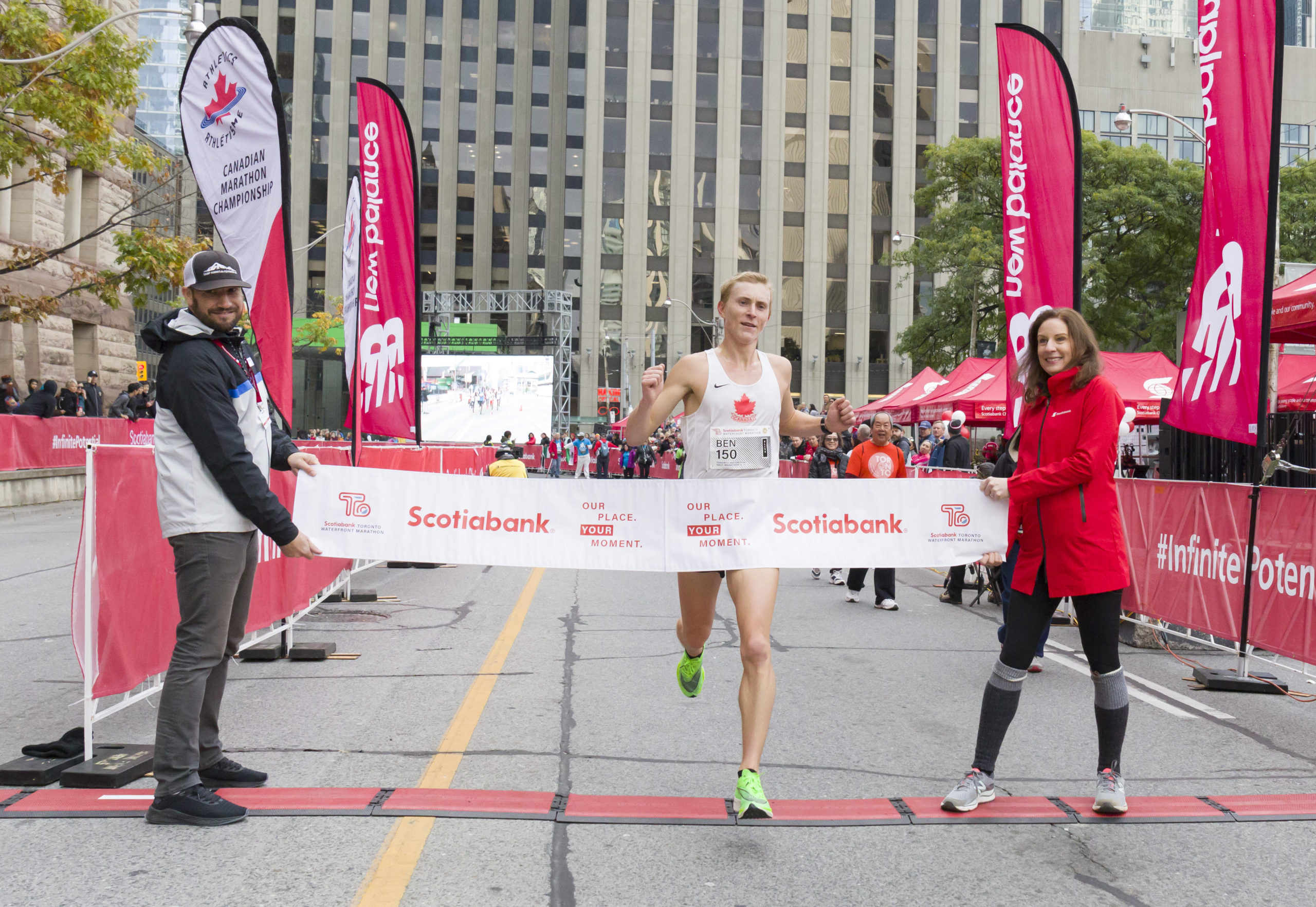
By Paul Gains
Toronto, ON, September 16, 2021 — As the excitement builds for head-to-head competition, two more Canadian Olympians have confirmed they will race in the Scotiabank Toronto Waterfront Marathon 10K on Sunday, October 17th.
Luc Bruchet and Ben Preisner — both members of the BC Endurance Project — will be chasing more than one medal, as the race also serves as the official Athletics Canada Canadian 10K Championship. The race, which is limited to 5,000 runners and sold out in only eight days, signals a welcome return to in-person racing.
The 30-year-old Bruchet competed in both the Rio and Tokyo Olympic Games in his specialty, the men’s 5,000m. The 2021 season has been his best yet, and although he narrowly missed advancing to the 5,000m final at Tokyo 2020, he has improved his personal best times throughout the year in the 1,500m (3:37.79) and 5,000m (13:12.56), and captured the Canadian 10,000m title (28:40.66).
“I took eight days off after the Tokyo Olympics and I ran a little here and there,” he revealed. “In a time trial for the Canadian 5K Championships…I ran 13:49. That’s where the baseline fitness is.” Bruchet has his sights set on the Canadian 10km record, which is held by Paul McCloy and has stood at 28:17 since 1987. Despite the longstanding record, he feels encouraged by his recent Olympic experience.
“It was awesome,” he said. “For a few years I wasn’t sure it would happen. 2016 happened and I was on such a high because I was only two years out of university. Everything came together so quick. I was young and in my mind that was the start of something but I didn’t qualify for the World [Athletics] Championships [in either 2017 or2019] between the two Olympics.”
However, Bruchet was at the Olympics for a different reason this time around, and explained, “I was there to qualify for the final and not there as a bystander. I didn’t qualify for the final but I was proud of how I put myself in the race.”
In some ways, Bruchet is at a crossroads. Engaged to be married and cognizant of the need to earn a living, he realises he has the potential to accomplish greater things. He also hopes he has done enough to earn Athletics Canada funding next season while actively chasing sponsorship.
“I have some things in the works. I am not in a huge rush to sign anything before the end of the year,” he says candidly. “With the 10K Championships and the Canadian Cross Country Championships coming up, I am looking at them as kind of resume boosters. If I can win another national title or two then maybe I can approach some of these companies at the end of the year and see if there is something more substantial.”
Meanwhile Preisner and his partner have just moved out to Vancouver after spending two years in Kingston, Ontario. Since winning the half marathon race at the 2019 Scotiabank Toronto Waterfront Marathon in an eye-catching 63:08, Preisner has been coached — at a distance — by BC Endurance Project coach Richard Lee. Now he is fully committed to training with the Vancouver based group.
Running 2:10:17 in his debut marathon in Chandler, Arizona back in December 2020 earned him a place on Canada’s Tokyo 2020 Olympic team. Unfortunately, his Olympic run in Sapporo, where organizers held the road races, was his only competition in 2021. The lack of in-person races has had a detrimental impact on his progress this year.
“It was all virtual races or time trials,” he recalled. “It was hard to find races in Canada and with the quarantine restrictions which went along with traveling across North America, it became too much of a hassle.”
Regarding his 46th place Olympic finish in 2:19:27, Preisner admitted, “I was happy but you always look for ways things could have gone better. You are looking for more no matter how you did — unless you win. Generally, I was happy. I placed higher than what I was ranked going in. I am taking from it what I can, learning from it, and thinking about how I can adapt as a marathon runner.”
Preisner, at 25 years of age, has many more years as a marathoner. Although he will focus on the marathon, the University of Tulsa graduate says he wants to explore his potential at shorter distances. His best official 10km is 30:10 but he has run 29:08.17 on the track.
“I really just want to be competitive,” he said of the Canadian 10K Championships. “Obviously the longer the better for me but I want to still develop some speed in my legs and not just become a straight marathoner for the rest of my life…It has been a while since I have done a Canadian national championship. I am definitely excited to see how competitive I am on the national stage with a distance I am a little less comfortable with.”
Like most of the Olympic distance runners, he has been cautious in his training load since returning from Japan. A recent workout with fellow BC Endurance athlete, Justin Kent, was a step in the right direction as Richard Lee monitored the pair.
“I have been building mileage,” he offered. “I am back up to 75 percent mileage but I started workouts just now. That gives me plenty of time to get ready for the Canadian 10K Championships and then I am planning to run the Valencia Marathon in December.”
Both Preisner and Bruchet are excited about flying back east to contest an in-person road race and to have the chance at winning some prize money.
“We haven’t had the opportunity to race any road races. Alan [Brookes, Race Director at Canada Running Series] and Run Ottawa are putting up some awesome prize money,” Bruchet said. “They treat the Canadian athletes really, really well. It is definitely something I will be focusing on this fall.”
-30-
Media interested in covering the STWM 10K can register for accreditation here. All media must receive advance accreditation to gain access to the in-person event on October 17th.
For more information:
Jenna Pettinato, Manager of Communications
jenna@canadarunningseries.com
About the Scotiabank Toronto Waterfront Marathon
The Scotiabank Toronto Waterfront Marathon is Canada’s premier running event and the grand finale of the Canada Running Series (CRS). Since 2017, the race has served as the Athletics Canada national marathon championship race and has doubled as the Olympic trials. During the 2020 event, participants raised over $2.96 million for 163 community charities through the
Scotiabank Charity Challenge. In 2021, the Scotiabank Toronto Waterfront Marathon will host a 10K along Toronto’s scenic lakeshore, the first in-person race for Canada Running Series since the pandemic began, which will also double as the Athletics Canada 10K Championships in partnership with Run Ottawa.
Using innovation and organization as guiding principles, Canada Running Series stages great experiences for runners of all levels, from Canadian Olympians to recreational and charity runners. With a mission of “building community through the sport of running,” CRS is committed to making sport part of sustainable communities and the city-building process. For more information, visit: https://www.torontowaterfrontmarathon.com/
About Athletics Canada
Athletics Canada is the national sport governing body for track and field, para athletics, crosscountry running, and road running. Its purpose is to support high performance athletics excellence at the world level, and to provide leadership in developmental athletics. Athletics Canada is a not for profit, charitable organization operating under a board of directors elected by provincial / territorial members. For more information, visit: https://athletics.ca/
About Run Ottawa
Run Ottawa is the National Capital Region’s premiere running organization and the organizers of Canada’s most popular multi-day running event, The Tamarack Ottawa Race Weekend. For more information, visit: https://www.runottawa.ca/
